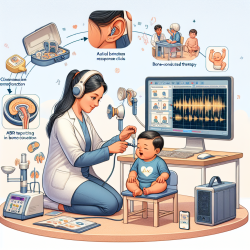Introduction
In the world of youth sports, the thrill of competition and the joy of physical activity come with a hidden risk: injuries. As participation in organized sports among children and adolescents continues to rise, so does the incidence of sports-related injuries. A recent review, "The child and adolescent athlete: a review of three potentially serious injuries," highlights three types of injuries that are particularly concerning: anterior cruciate ligament (ACL) tears, concussions, and physeal injuries. Understanding these injuries and how to prevent them is crucial for practitioners, parents, and coaches aiming to safeguard young athletes.
Understanding the Risks
The review underscores the vulnerability of young athletes to specific injuries due to their unique physiological and developmental characteristics. The three highlighted injuries pose significant risks:
- ACL Injuries: These injuries often result from non-contact pivoting motions and can lead to long-term complications such as osteoarthritis. The management of ACL injuries in young athletes is complex and requires careful consideration of growth and development.
- Concussions: With increasing media attention, concussions are recognized for their potential to impact cognitive development and school performance. Proper management and prevention are essential to mitigate long-term effects.
- Physeal Injuries: Unique to the pediatric population, these injuries can affect growth and development if not managed correctly. The frequency of stress-related physeal injuries is on the rise, necessitating vigilant prevention strategies.
Data-Driven Prevention Strategies
To effectively prevent these injuries, practitioners should focus on data-driven strategies that are supported by research. Here are some key recommendations:
- Implement Neuromuscular Training: Studies have shown that neuromuscular training programs can significantly reduce the risk of ACL injuries in young athletes. These programs focus on enhancing strength, proprioception, and coordination.
- Educate on Concussion Awareness: Increasing awareness and education about concussions among coaches, parents, and athletes is vital. Understanding the signs and symptoms can lead to timely interventions and reduce the risk of long-term cognitive effects.
- Monitor Growth and Training Loads: For physeal injuries, it's crucial to monitor growth spurts and adjust training loads accordingly. Avoiding repetitive stress and allowing for adequate rest can prevent overuse injuries.
Encouraging Further Research
While current research provides valuable insights, there is still much to learn about preventing and managing these injuries. Practitioners are encouraged to stay informed about the latest studies and consider contributing to research efforts. By doing so, we can continue to improve safety protocols and enhance outcomes for young athletes.
Conclusion
The safety and well-being of young athletes should be a top priority for anyone involved in youth sports. By understanding the risks associated with ACL injuries, concussions, and physeal injuries, and implementing evidence-based prevention strategies, we can help ensure that children enjoy the benefits of sports participation without the burden of serious injuries. For a deeper dive into the research, you can access the original paper, The child and adolescent athlete: a review of three potentially serious injuries.










